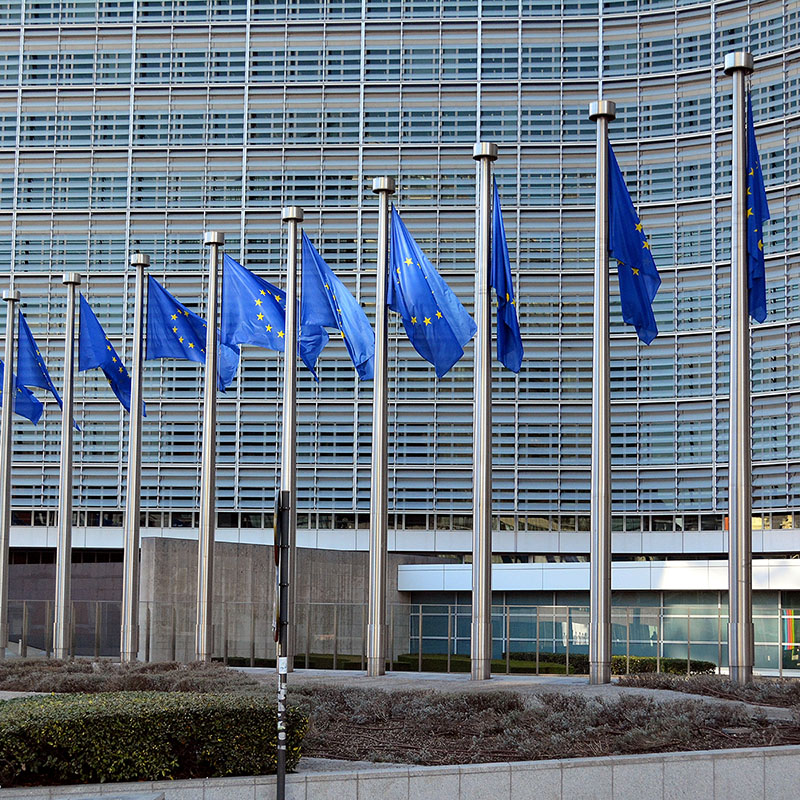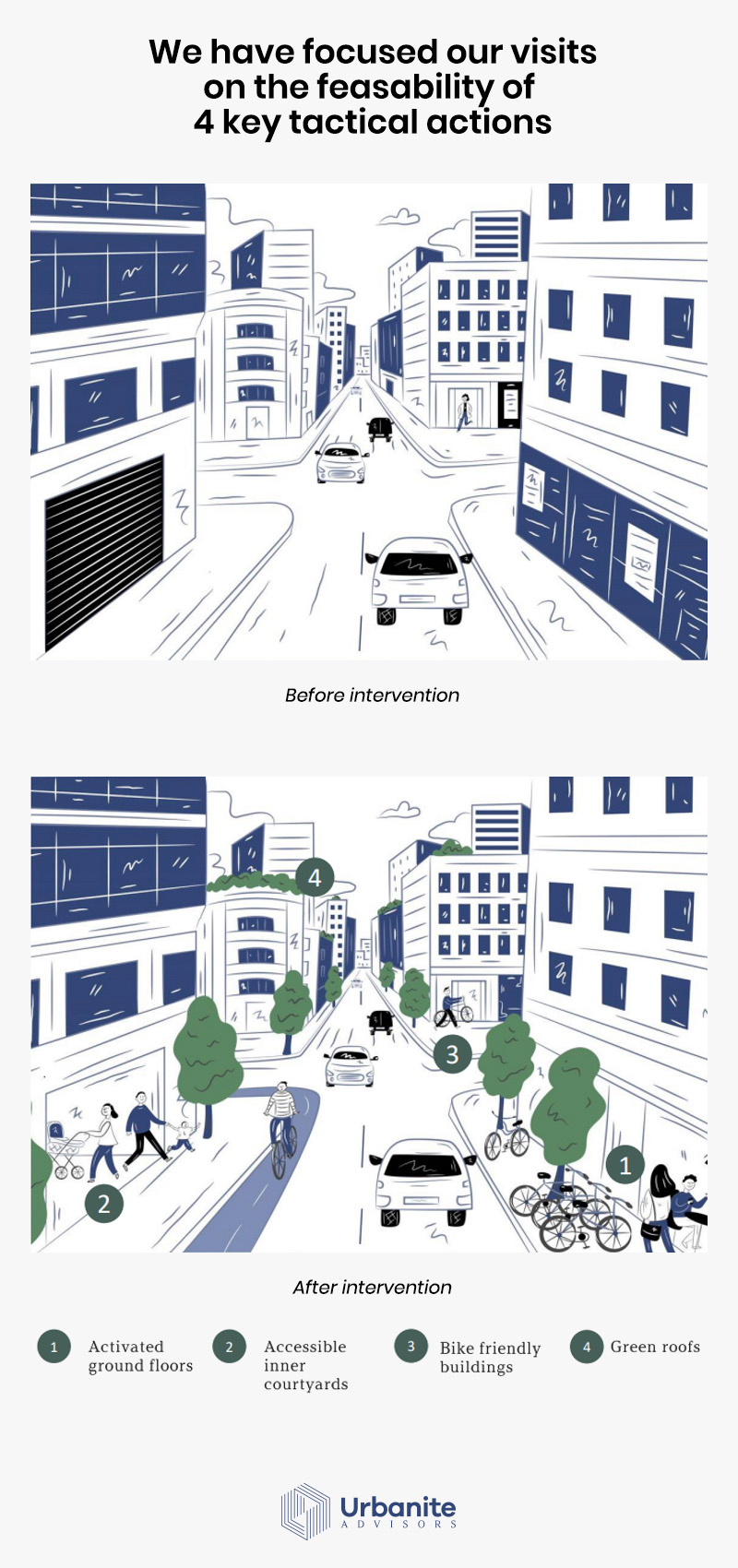

If we define the European quarter by its cultural and sociological significance, it is clear that the European quarter refers to the historic seat of the European institutions and to (one of) the largest office-based centers in Belgium.
If we try to define the European quarter in a geographical sense, things are more ambiguous. All agree that the European quarter starts at the small ring road on the west, on the outside of Brussels' City pentagon, and that it centers around the Leopold district. However, its outside borders (North, South and East) are arbitrary and subject to interpretation.
The European quarter is a patchwork of four neighborhoods:
In 2020, these neighborhoods housed ca. 26.000 inhabitants, 2% of the Brussels population only, but more than 100.000 office workers, or ca. 25 % of the city total.

Given the high stakes and the many different stakeholders in the neighborhood, the European quarter deserves a "facilitator" of conversations between the various protagonists.
The European Quarter Fund attaches great importance to the general interest of the quarter and defends this interest, alongside with the representatives of the four different communes in which the quarter is located – the City of Brussels, the Commune of Saint-Josse, the Commune of Etterbeek and the Commune of Ixelles – and also alongside representatives of the European institutions and the Belgian federal State.
This general interest can only be defended in a sincere way if the neighborhood committees (such as Groupe d'Animation du Quartier Européen or "GAQ" and the Association Quartier Léopold or "AQL") and civil society initiatives (such as the EU Cycling Group, Schuman Square or the retailers' associations) are actively involved in the decision-making process. The European Quarter Fund emphasizes the undeniable contribution of these grassroots organizations to the multifunctional character of the neighborhood.
It is the European Quarter Fund's conviction that the real estate actors, be it owners or developers, private companies as well as public institutions, have an important social responsibility to participate in the architectural and urban development of the quarter, and to collaborate on projects of general interest. As a "think-tank" and laboratory for tactical urban measures, the Fund also wishes to search and strive for answers to (the European institutions') questions of (energy) efficiency, security and the perception of these institutions.
As corporate fund, the European Quarter Fund would not exist without its (financially contributing) Members and the support of the King Baudouin Foundation. The programme of actions of the Fund and its results are (half) yearly proposed and discussed within the Management Committee of the European Quarter Fund.
Belgium, which at one point had the highest rate of coronavirus infections in Europe, went into several lockdowns in 2020-2021. The effects of these lockdowns have been devastating for the European quarter's cafés, restaurants and shops. The evolutions in the workplace ('new ways of working') and in terms of mobility, already at work before 2020, have been revealed and accelerated by the corona pandemic, and are both a serious challenge to and an opportunity for the European district.
Conscious of the urgent need for change, the European Quarter Fund commissioned Urbanite Advisors with a largely three-folded mission:
The Final Report of Urbanite Advisors provides several important findings on the future office demand in the European quarter:
Based on the interviews conducted with several important stakeholders in the quarter, a shared vision comes forward on how the European quarter should look like in the future, but there is no alignment on how to deliver the much-needed change. This shared vision for the future consists of a much more livable and diverse European quarter with a markedly higher proportion of housing, additional urban functions and more green spaces, and with a clear and cohesive identity where the neighborhoods Squares, Jourdan, Leopold & the Cinquantenaire are reunited through a strengthened 'active' mobility and the rue de la Loi / rue Belliard are no longer "urban walls".
The key actions proposed by the stakeholders can be subdivided as follows:
Out of these important findings and key actions proposed, the European Quarter Fund now gets down to business and goes forward with 4 key tactical actions:
Urbanite Advisors identified a total of 37 office buildings in a pilot area of the European quarter where an audit on the feasibility of the key tactical actions has been conducted. The results of these visits can be found here.

The European Quarter Fund set up an inventory of in total 736 buildings in the European quarter. This inventory is visualized on the map shown.
This map shows the type of building (Office – Commercial – Residential), the name of the owner and/or property manager of the building (database still in progress), and whether the ground floor of this building is activated or not (and if not, whether the ground floor is empty, necessary to renovate, under construction or to rent).
Next step will be the "matchmaking" process. A digital database and a service will be launched to connect the available spaces with possible projects to fill in these spaces.
On the one hand, the European Quarter Fund will contact as many owners or property managers as possible, to identify with them possible opportunities for alternative uses of their ground floors. On the other hand, this exercise will involve inviting local actors belonging to the civil society at large, to submit an expression of interest to participate in the project. Those actors interested will be logged in a database, along with their interests and opportunities for collaboration.
The whole exercise will ultimately also be of use in the framework of the "Common Resources for Regeneration through Culture" in short "CoRRC" or better known as the "Green Museum Mile" project proposal submitted by Perspective.Brussels in the frame of an European Urban Initiative of the European Commission, and in which the European Quarter Fund participates.